WEEK7 GLASGOW FIELD TRIP: YOU ARE MY KINDRED SPIRIT
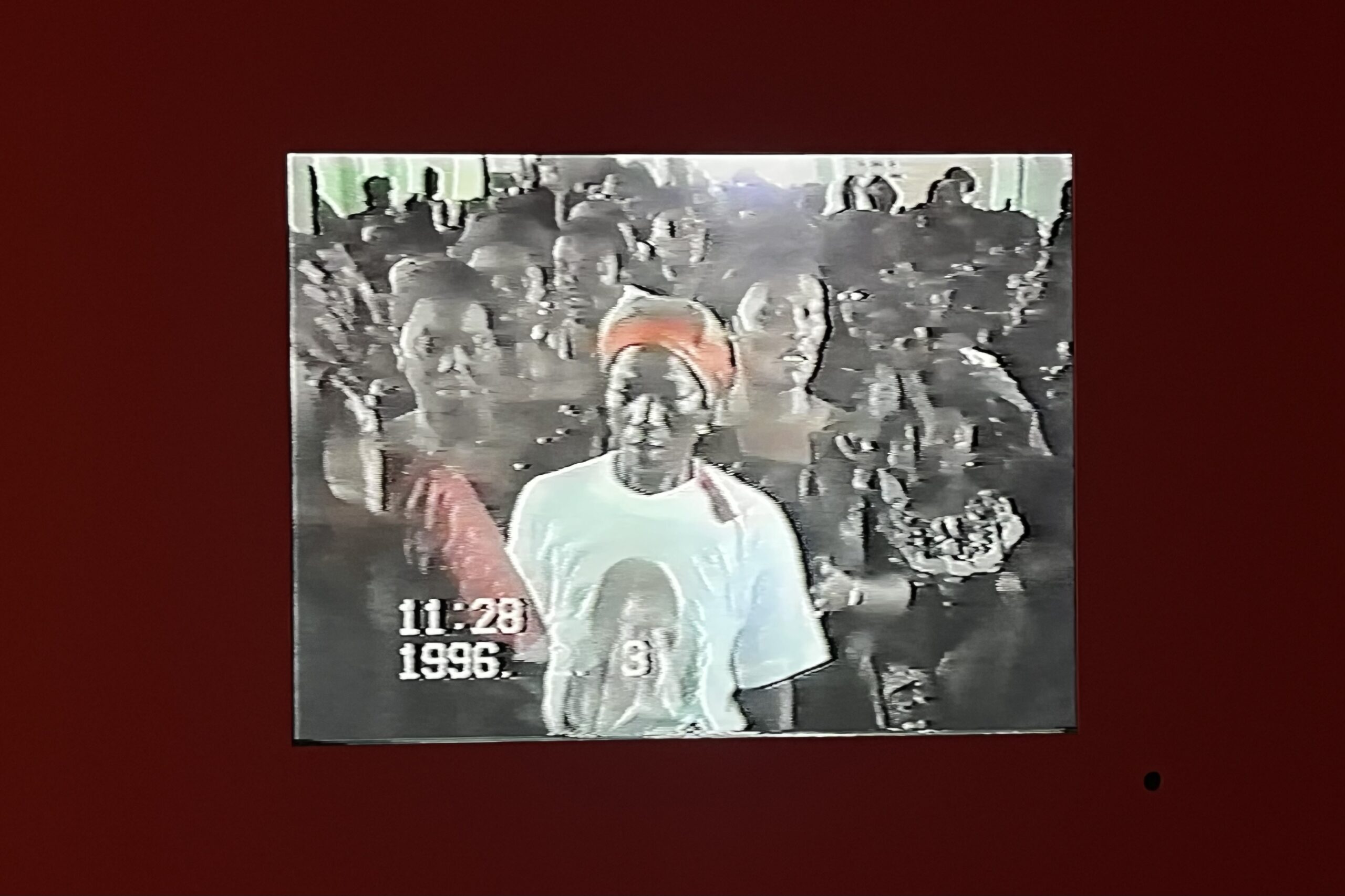
Walking into You Are My Kindred Spirit at Tramway, I was immediately struck by its immersive design. The exhibition masterfully blends moving images, spoken word, and photography, creating a sensory experience that invites visitors into Maud Sulter’s world. Dim lighting, the hum of recorded poetry, and flickering projections contribute to an atmosphere that feels both personal and historic. This is more than an exhibition—it’s an experience.
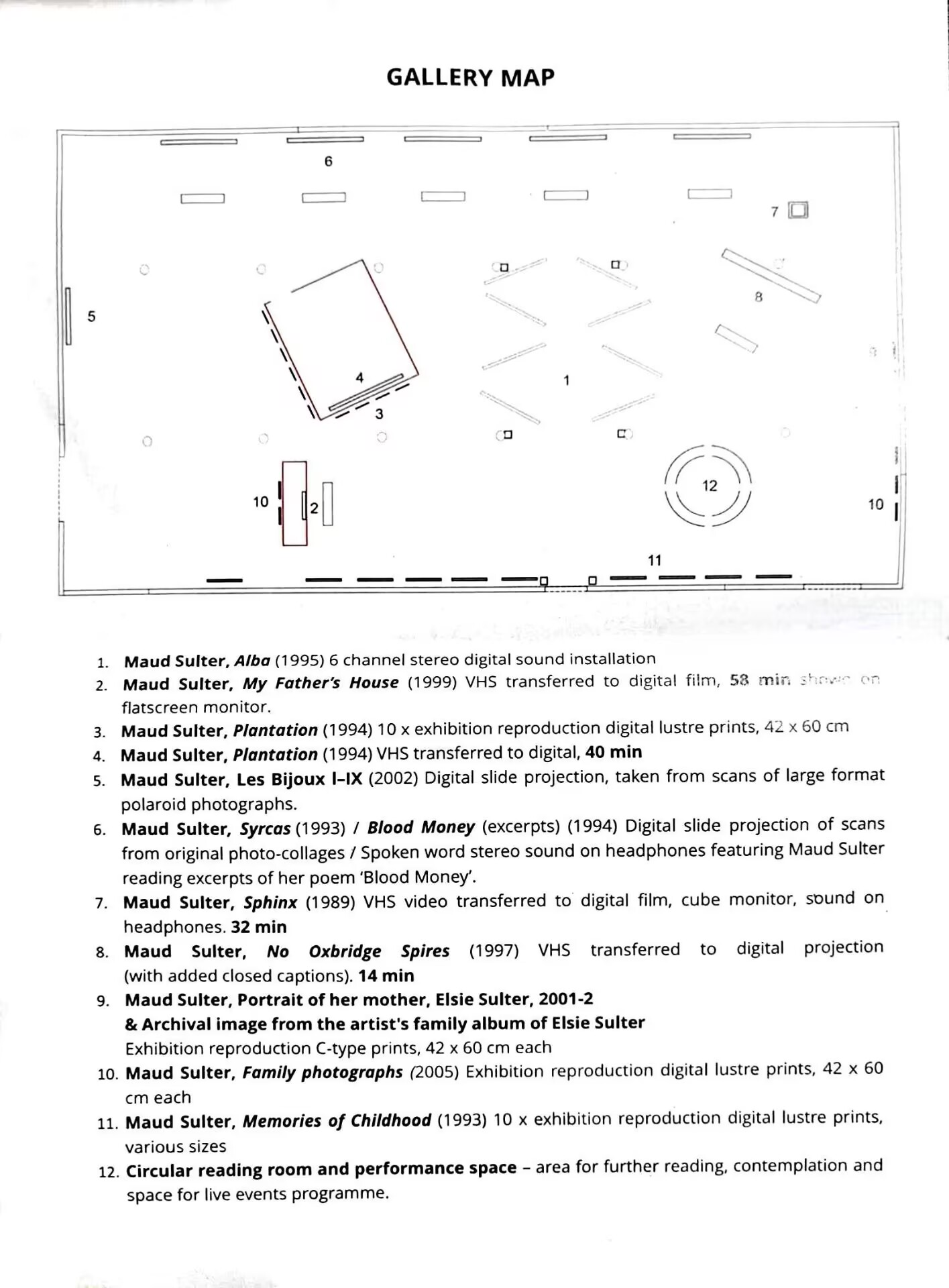
GALLERY MAP.
The spatial arrangement enhances its impact. Large-scale projections offer a cinematic engagement with Sulter’s photography, while archival recordings and spoken word performances create an evolving emotional landscape. The interplay of past and present reinforces themes of memory and identity.
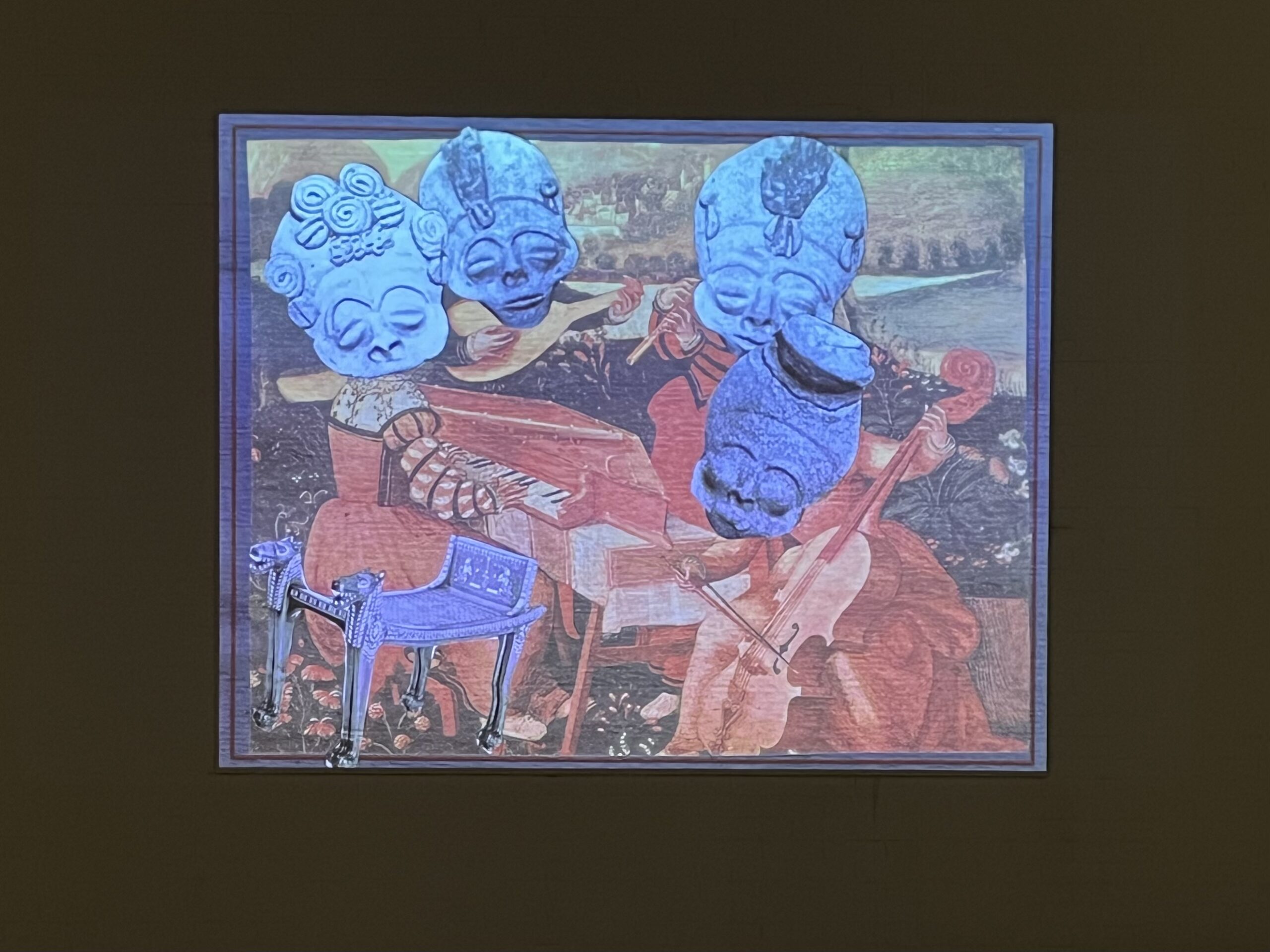
Maud Sulter, Syrcas (1993) / Blood Money (excerpts) (1994) Digital slide projection of scans from original photo-collages / Spoken word stereo sound on headphones featuring Maud Sulter reading excerpts of her poem ‘Blood Money’.
Sound is particularly striking. Sulter’s voice, whether in the Alba Sonnets or No Oxbridge Spires, resonates throughout the space, transforming it into a living archive. This curatorial choice highlights the power of voice in contemporary exhibitions—something I find deeply inspiring.
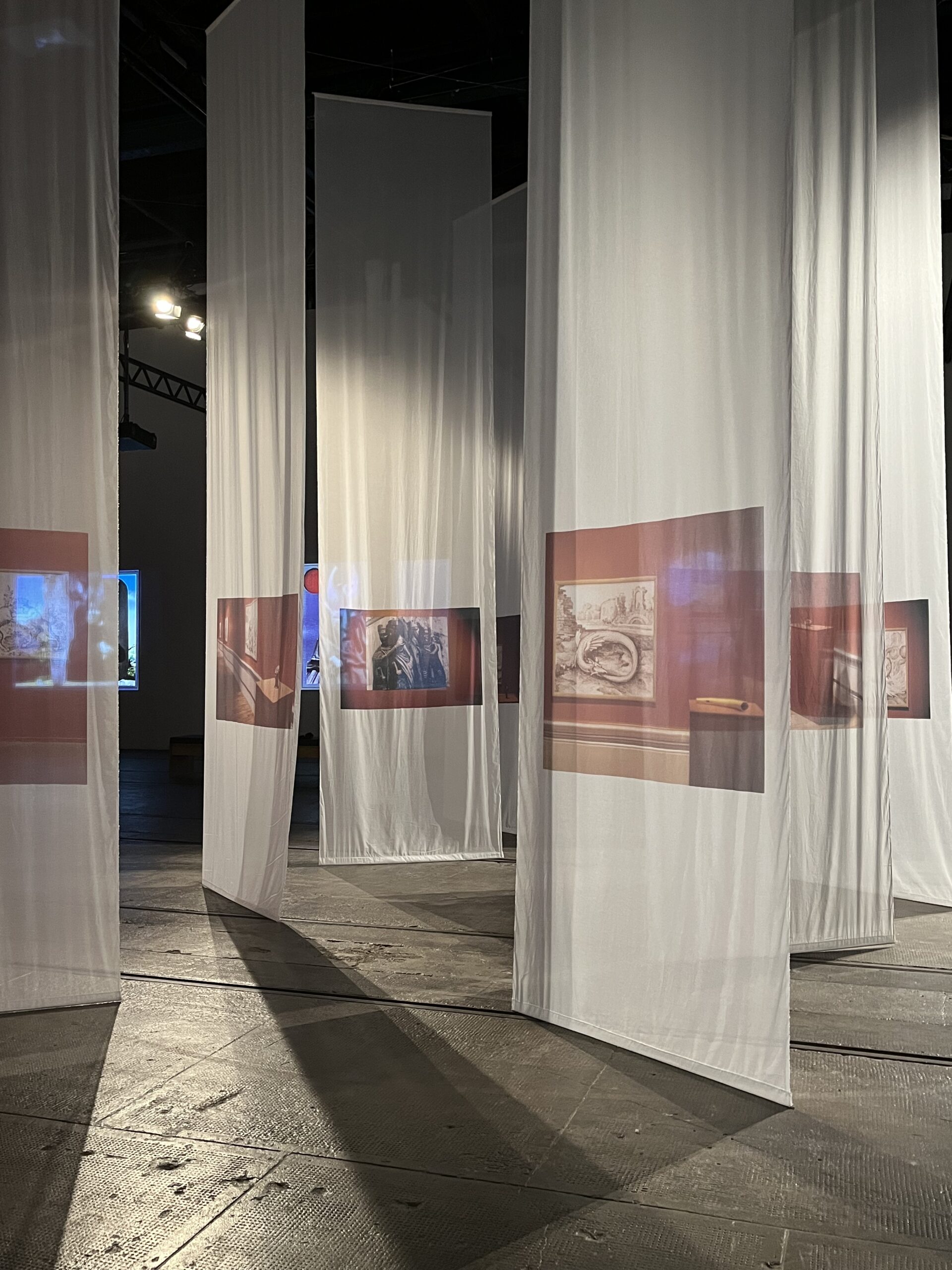
Maud Sulter, Alba (1995) 6 channel stereo digital sound installation.
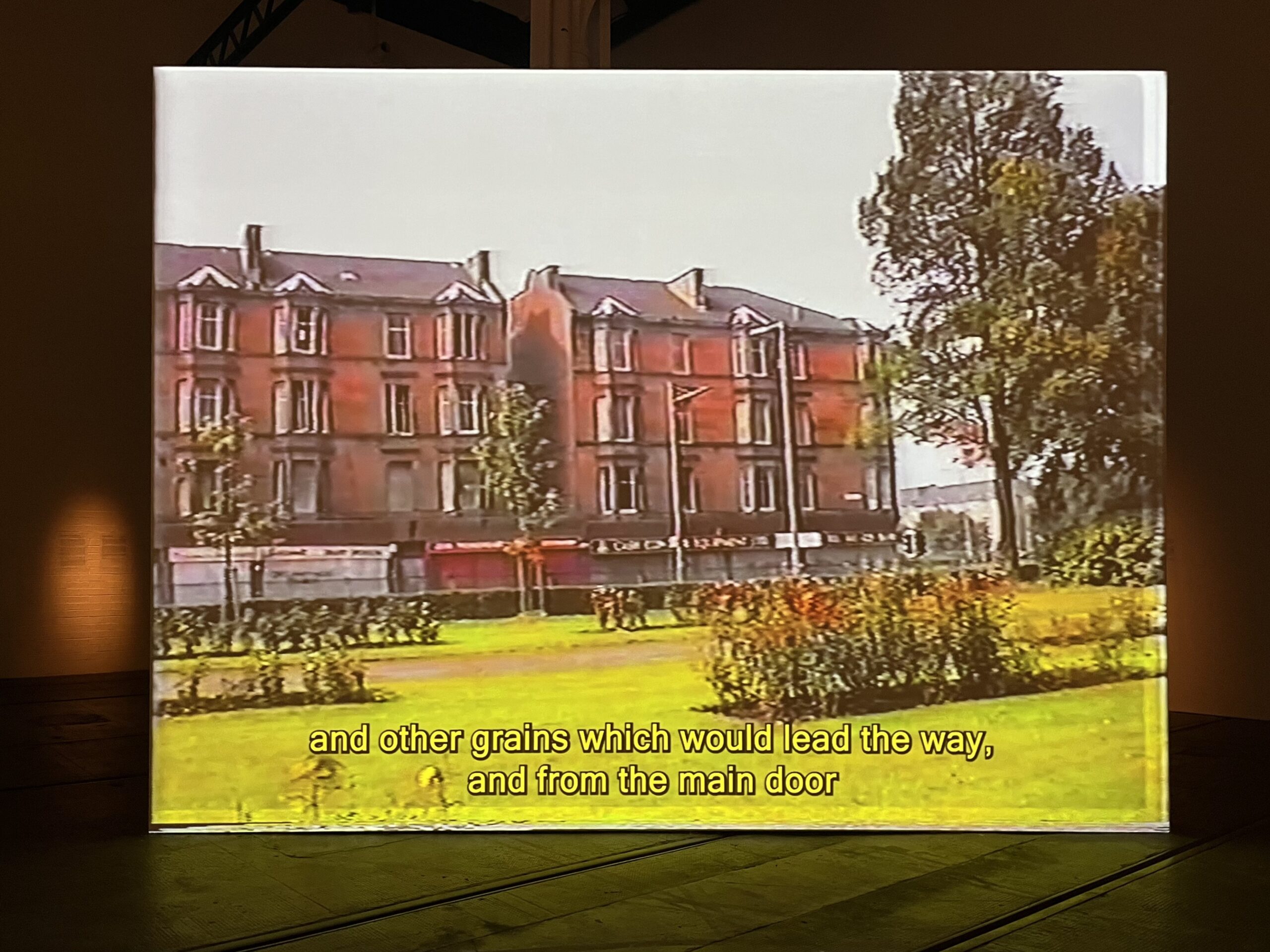
Maud Sulter, No Oxbridge Spires (1997) VHS transferred to digital projection (with added closed captions). 14 min
Thematic curation makes Sulter’s work accessible and layered. My Father’s House juxtaposes grainy video footage of her father’s funeral in Ghana with poetic narration, blending personal and collective histories. This dialogue between memory and broader cultural narratives is something I aspire to in my own curatorial work.

Maud Sulter, My Father’s House (1999) VHS transferred to digital film, 58 min shower on flatscreen monitor.
Beyond content, the exhibition challenges traditional archives. By positioning Sulter’s work as a “living archive,” it suggests history is dynamic, shaped through artistic practice. The live programme, curated by Pelumi Odubanjo, invites participation, reinforcing exhibitions as spaces for dialogue rather than passive observation.
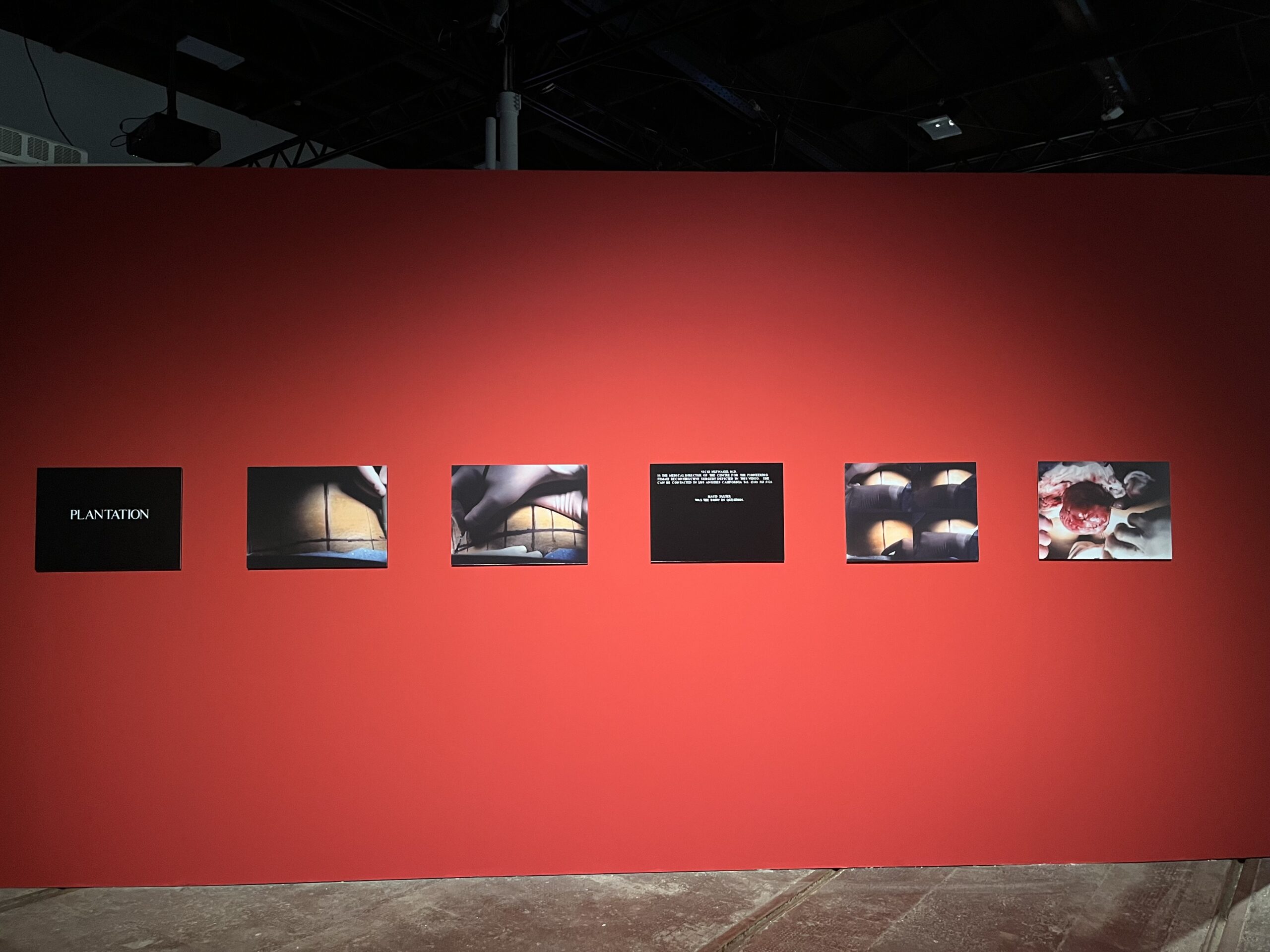
Maud Sulter, Plantation (1994) 10 x exhibition reproduction digital lustre prints, 42 x 60 cm.
WEEK7 GLASGOW FIELD TRIP: YOU ARE MY KINDRED SPIRIT / Tianyi Chen / Curating (2024-2025)[SEM2] by is licensed under a
WEEK7 GLASGOW FIELD TRIP: YOU ARE MY KINDRED SPIRIT / Tianyi Chen / Curating (2024-2025)[SEM2] by is licensed under a



